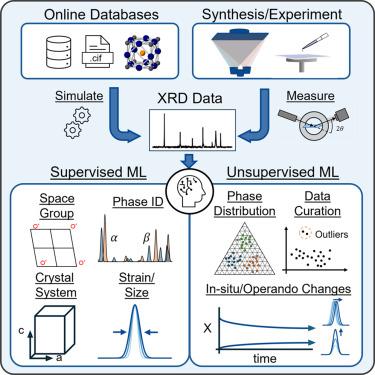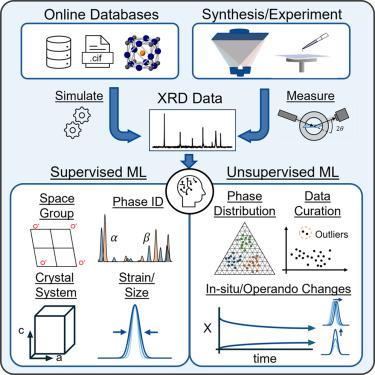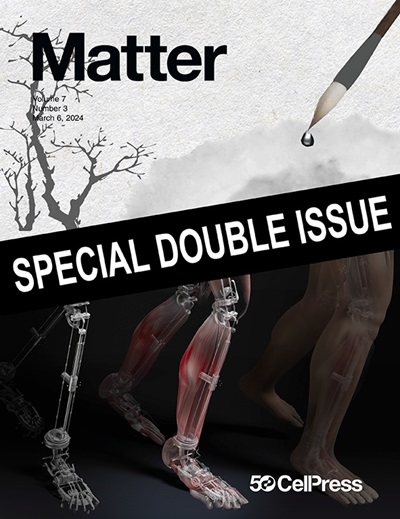x射线衍射中用于材料发现和表征的机器学习
IF 17.5
1区 材料科学
Q1 MATERIALS SCIENCE, MULTIDISCIPLINARY
引用次数: 0
摘要
机器学习(ML)是一种很有前途的分析方法,用于大型高通量,原位和操作x射线衍射(XRD)数据集。然而,默认情况下,ML方法是与物理无关的,因此必须仔细解释。在这篇综述中,我们调查了如何使用监督机器学习方法来预测纯成分和混合成分材料的对称性和相,并强调了与实验人工制品和模型解释相关的挑战。我们还回顾了最近在提取隐藏在高维数据中的模式中使用的无监督ML方法,例如在原位和微观研究中。最后,我们讨论了问题制定、数据可转移性和报告的重要性,并利用文献中的例子,我们提供了各种资源,以加快XRD或ML新读者的学习曲线。我们提倡对ML方法进行更严格的审查,以及它们在文献中的报告方式,我们解释了如何负责任地进行数据驱动的研究。本文章由计算机程序翻译,如有差异,请以英文原文为准。


Machine learning in X-ray diffraction for materials discovery and characterization
Machine learning (ML) is a promising analytical method for large high-throughput, in situ, and operando X-ray diffraction (XRD) datasets. However, ML methods are, by default, physics agnostic and must therefore be interpreted carefully. In this review, we survey how supervised ML methods are used to predict symmetries and phases in pure and mixed-composition materials, and we highlight challenges related to experimental artifacts and model interpretation. We also review recent uses of unsupervised ML methods in the extraction of patterns hidden in high-dimensional data, such as in in situ and microscopic studies. Finally, we discuss the importance of problem formulation, data transferability, and reporting, leveraging examples from the literature, and we provide various resources throughout to expedite the learning curve for readers new to XRD or ML. We advocate for greater scrutiny of ML methods and how they are reported in the literature, and we explain how to conduct data-driven research responsibly.
求助全文
通过发布文献求助,成功后即可免费获取论文全文。
去求助
来源期刊

Matter
MATERIALS SCIENCE, MULTIDISCIPLINARY-
CiteScore
26.30
自引率
2.60%
发文量
367
期刊介绍:
Matter, a monthly journal affiliated with Cell, spans the broad field of materials science from nano to macro levels,covering fundamentals to applications. Embracing groundbreaking technologies,it includes full-length research articles,reviews, perspectives,previews, opinions, personnel stories, and general editorial content.
Matter aims to be the primary resource for researchers in academia and industry, inspiring the next generation of materials scientists.
 求助内容:
求助内容: 应助结果提醒方式:
应助结果提醒方式:


